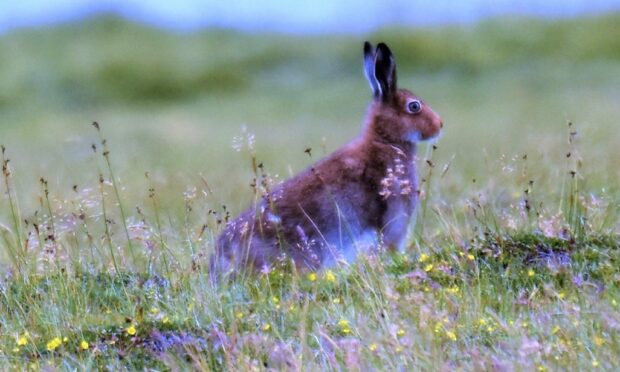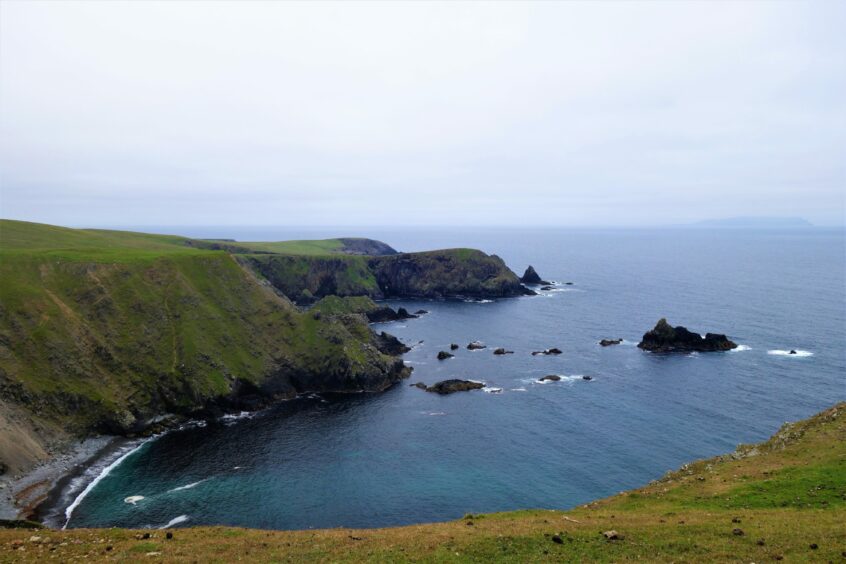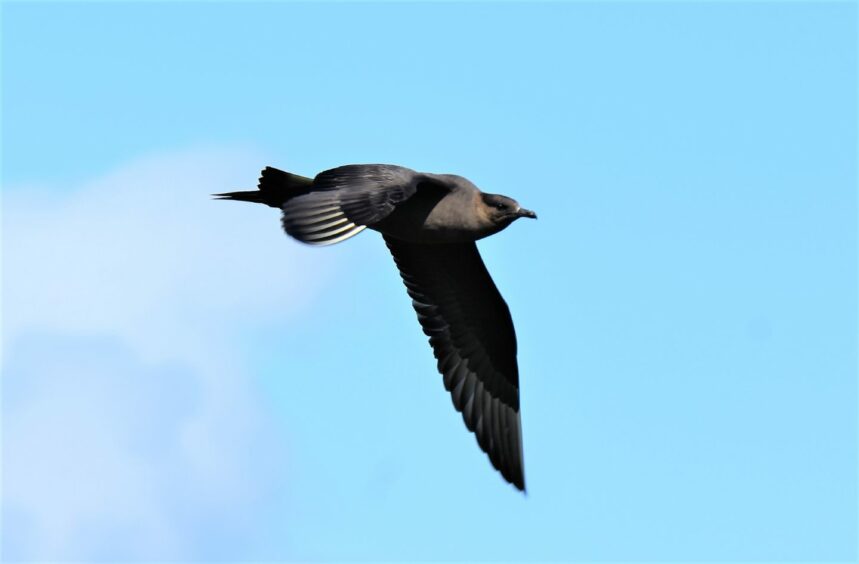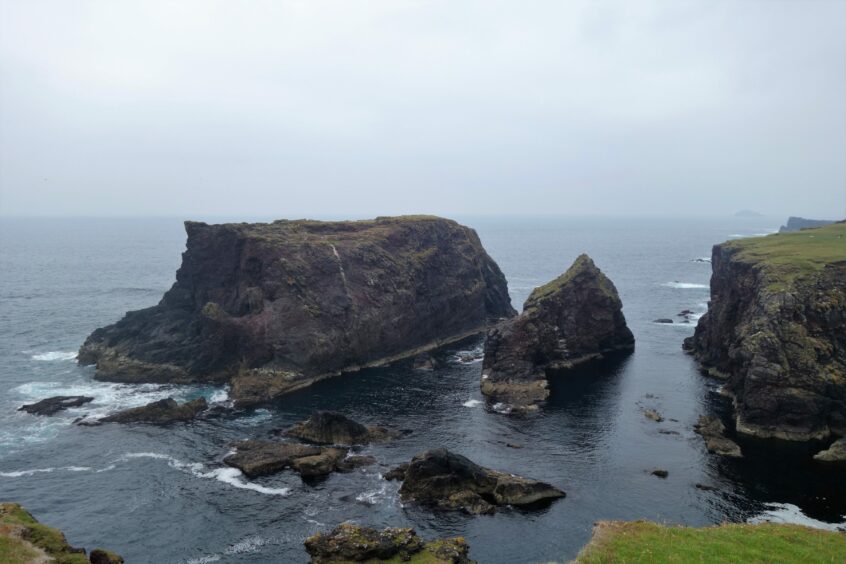A recent period of isolation at home due to Covid, resulted in me reminiscing about a trip to Shetland in July last year, when every nuance of the landscape and the addictive smell of the omnipresent sea air are still tinged indelibly upon my senses.
Travelling around Shetland always delivers new surprises and the most absorbing scenery, and it is hard to imagine more spectacular coastlines than the cliffs at Eshaness in the north-west of the mainland or those at Deepdale further south.
As I wandered along the clifftops at Deepdale, several mountain hares scurried on the clifftops, while the cries of Arctic terns – or ‘tirricks’ as they are known in Shetland – were all around.
On one nearby pebbly beach, a young tirrick, a downy little grey bundle, suddenly scurried ahead of me before squeezing itself against a rock, into which it pressed its face to avoid eye contact.
It lay huddled, stony still, not even daring to peek at me.
I wondered what was going through its mind.
Relying on camouflage was its last line of defence and it would have been a nerve-racking moment, unsure whether I was friend or foe and whether it was on the verge of meeting an untimely end.
I quickly retreated to leave the youngster alone, so it could relax once more and lest a predatory bonxie (great skua) should become aware of its whereabouts.
Favourite spot
Another favourite spot of mine was the No Ness peninsula on the south-east mainland, which unveiled a spectacular panorama down the coast to Sumburgh Head.
On one memorable occasion here, a pair of Arctic skuas swept low over my head.
Arctic skuas are less frequent than bonxies on Shetland and are more graceful and slender in form.
Like the bonxie, Arctic skuas dive-bomb other seabirds to force them to disgorge or release their fish catch.
At one time, it was erroneously believed that Arctic skuas dive-bombed other birds to persuade them to defecate, which has led to several old common names that include ‘dirt bird’ and ‘dirty Allan’.
In Shetland, they are also known as ‘scooty Allan’.
Red-throated divers
On many tarns and lochans, red-throated divers with their distinctive low profiles glided across the steely-grey waters.
About the size of a small goose, they are attractive birds with their light grey heads and vibrant red throats.
An old Shetland name for the red-throated diver is ‘rain-goose’, in reference to the long-held belief that the bird can foretell the bad weather with short cries (or flying inland) indicating fine weather, while long, plaintive ones (or flying out to sea) give a warning of more inclement conditions.
An old Shetland poem states: ‘If the rain gose flees ta da hill, Ye can geng ta da haf whin ye will; Bit whin sho gengs ta da sea. Ye maun draw up yir boats an flee’.”
A sceptic might suggest such meteorological forecasting skills were bound to bear fruit, given that the weather in Shetland is rarely settled for any length of time.




Conversation